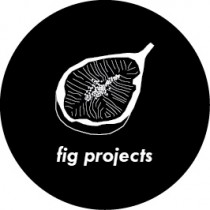Co-editing of the issue 46 of Harvard Design Magazine, dedicated to labor.
Issued in winter 2019, “No Sweat” focuses on the relationship between architecture and labor. FIG Projects contributed to the creation and selection of content.
Several of the essays that were included in the issue are accessible online.
“Labor Pains” by Jennifer Sigler, the editor of HDM
“No Free Rides” on the Uber campus by Alice Bucknell.
“Pretending to Work” a conversation between Benedict Cloutte and David Graeber.
The very powerful “Refusal after Refusal” by Adjustments Agency.
What made us very proud is “Concrete as Weapon” a large insert of a text by
FIG Projects was also responsible for a section on co-working, inviting Merve Bedir, Shumi Bose, Ana Rascovsky, Alessandra Ponte and Sean O’Toole to describe a day spent at a co-working space in Hong Kong, London, Buenos Aires, Paris and Cape Town. The PDF can be downloaded here.
This is the general introduction to the issue:
This issue of Harvard Design Magazine is about the design of work and the work of design. “No Sweat” challenges designers to speculate on the spaces of work in an accelerated future, and to imagine a world in which a novel ethics of labor can emerge. What scenarios and spaces can we imagine for the next generation of work? How can we anticipate and formulate work environments and experiences that are productive, humane, and ecologically responsible?
From corner office to kitchen sink, from building site to factory floor, from cubicle to car to coffee shop, work shapes our lives and physical world. Whether we produce objects, generate ideas, manage processes, or perform services, work is a hybrid of dedication and alienation, power and oppression. As work spaces morph to integrate machines that mimic, assist, or complement human abilities, the way we perform work, and the way we feel about it, change too.
To work (to put forth effort) and the work (that effort, or the result it generates) are sources of pride and shame, fulfillment and drudgery. As many jobs become obsolete, and as populations are displaced under the pressures of climate change and political turmoil, the boundaries of the workplace are shifting in space and time. Though some claim that a world without work is on the horizon, “labor-saving” innovations are enmeshed with human exploitation, and housework and care work remain at the crux of persistent inequalities.
Paradoxically, the more that work, as we once understood it, appears to be receding, the more omnipresent and ambiguous it becomes. The workplace is everywhere—or is it nowhere?

